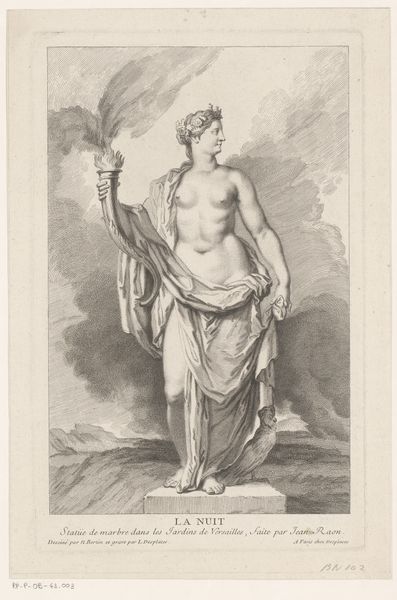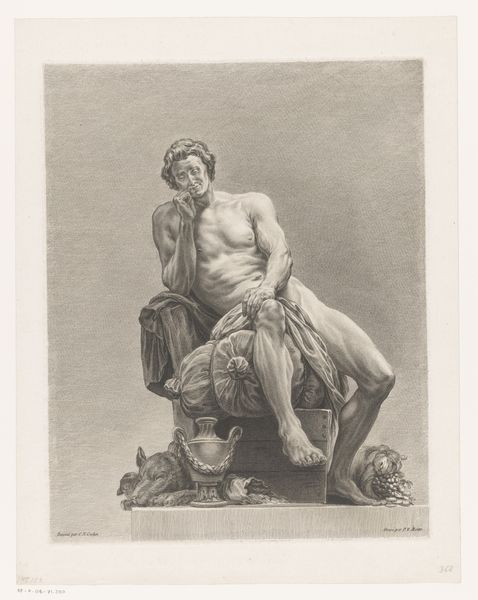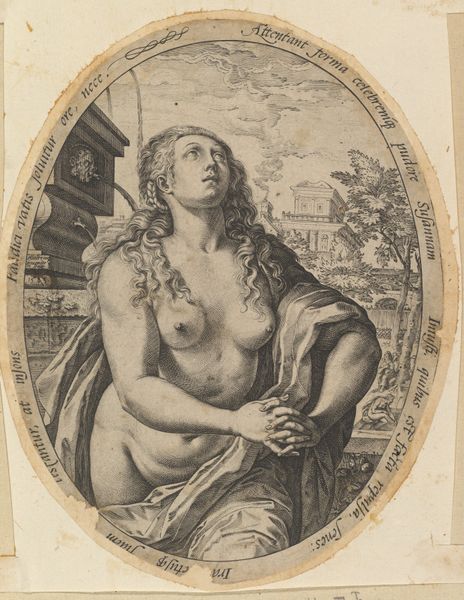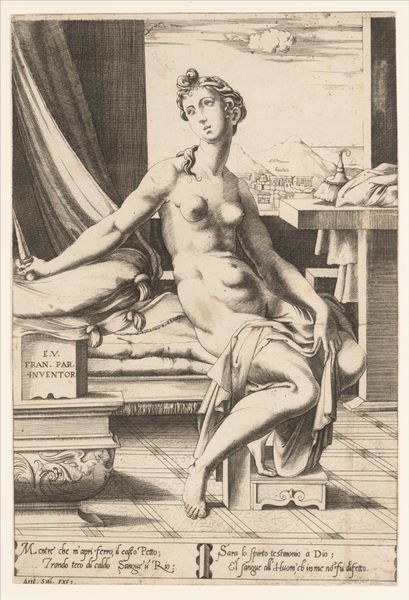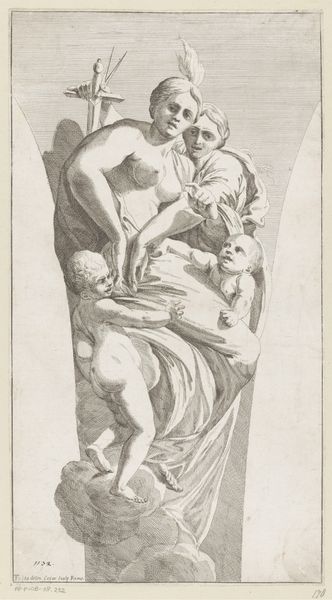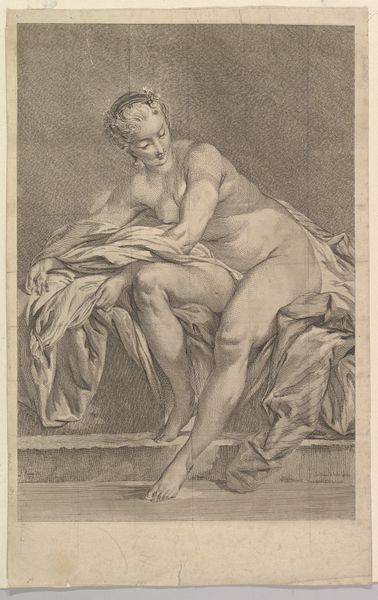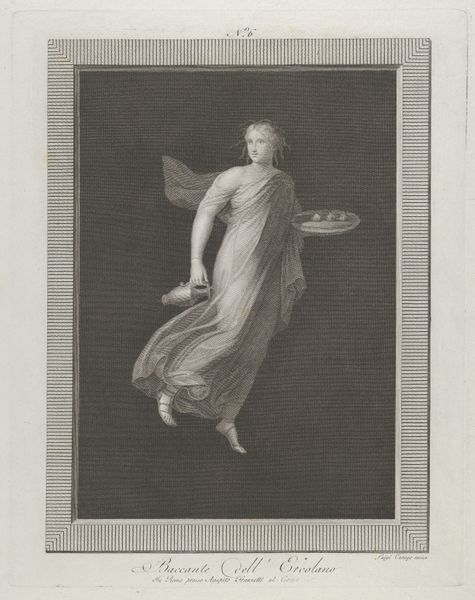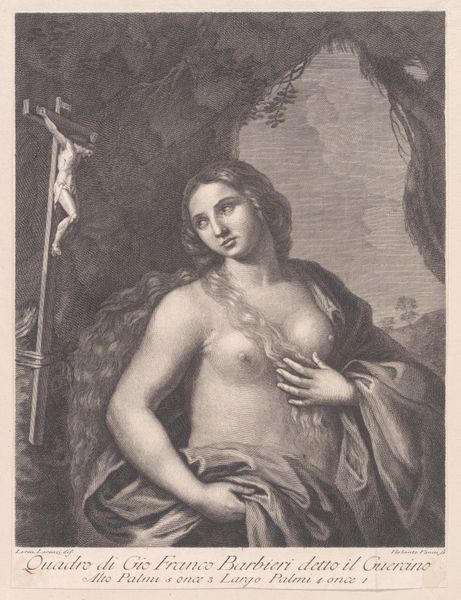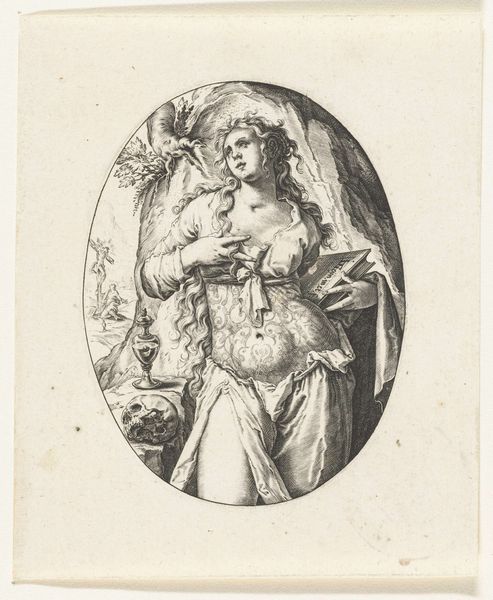
Lucretia seated, half naked, stabbing herself in the stomach with a dagger in her right hand and holding a cloth in her raised left hand, looking upwards, after Pellegrini? 1782
0:00
0:00
Dimensions: Sheet: 19 7/8 × 15 3/8 in. (50.5 × 39 cm)
Copyright: Public Domain
Editor: Here we have a print from 1782, "Lucretia seated, half naked, stabbing herself…" made with engraving, maybe charcoal drawing too and it’s held at the Met in New York. It looks…well, dramatic. All that stark shading makes it almost theatrical. What stands out to you in this piece? Curator: What strikes me is the reproduction of Pellegrini's original scene via engraving, a mechanized process for wider dissemination. Consider the social context: an image of female virtue and sacrifice, made accessible to a burgeoning middle class through mass production. Who was consuming this image and how did that consumption affect the way people thought about labor or access to luxury materials or class differences in the eighteenth century? Editor: So you're saying the print isn't just about Lucretia’s story, but also the story of how people gained access to art? It's about who *could* own it? Curator: Precisely. Engravings like these democratized access to imagery. And consider the implications of turning something like painting, done by hand, to the mechanical arts of the printing press and repeatable copies. These images, which once might be accessible only to the wealthy, can now furnish moral lessons and aesthetic pleasure across different segments of society. What's gained, and lost, in this transition from a unique artwork to a printed copy? Editor: I never thought of it that way – about who has access to create it, who reproduces it, who then owns it... fascinating to examine it from that manufacturing aspect. Thanks! Curator: My pleasure. It always brings up new points of reflection and shows how many doors there are into examining the social contexts around the consumption of fine art and labor conditions of printing it, at the time!
Comments
No comments
Be the first to comment and join the conversation on the ultimate creative platform.
